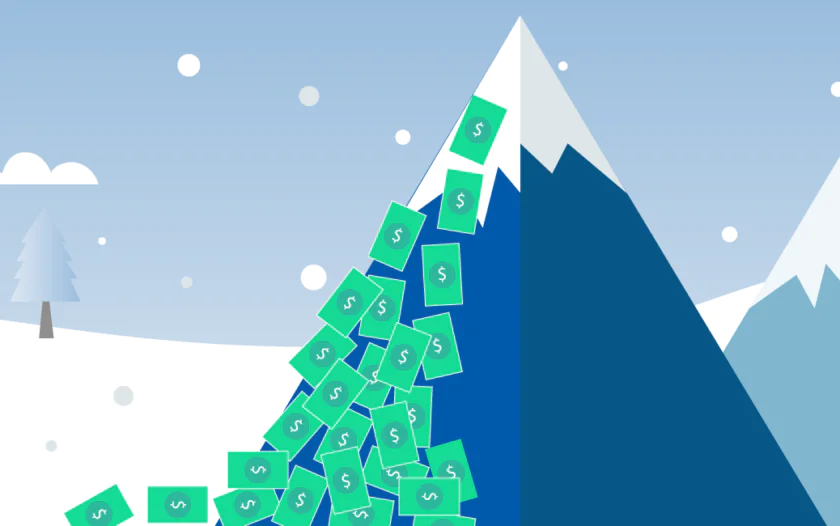Debt can feel overwhelming and unmanageable, but the good news is that there are tried and tested strategies to guide you toward financial freedom. Among the many options available, the debt snowball and debt avalanche methods are two of the most commonly recommended approaches for tackling debt effectively. These strategies offer different pathways to systematically eliminate your debts, and understanding the pros and cons of each can empower you to choose the one that best fits your financial goals. This article will take a closer look at both methods, break down their differences, and help you make an informed decision about your debt repayment plan.
Understanding the Debt Snowball Method
The debt snowball method focuses on creating momentum in your debt repayment process by targeting your smallest debts first. With this method, you list all your debts in order of balance size, from smallest to largest, without considering the interest rates. You then dedicate as much money as possible to paying off the smallest debt, while making minimum payments on the others. Once that small debt is paid off, you take the money you were using for it and roll it into paying down the next smallest debt. This process repeats until all debts are eliminated. People who choose the debt snowball method often find it motivating because clearing the smallest debts feels like small but significant wins along the way. These psychological boosts can help you stick to your plan longer.
Delving into the Debt Avalanche Method
Unlike the snowball method, the debt avalanche method prioritizes debts with the highest interest rates, regardless of the amount owed. By focusing your resources on paying off high-interest debts first, this method minimizes the total interest you’ll pay over time, making it the more mathematically efficient approach. Once the highest-interest debt is paid off, funds are directed toward the debt with the next highest rate, continuing this progression until all debts are clear. While it might take longer to see significant progress as you address the debts with the heftiest interest, the avalanche method ensures you save the most money in the long run. Its logic is straightforward—eliminate the most expensive debts first before tackling the rest.
Breaking Down the Mathematical Differences
When comparing these two strategies from a purely mathematical perspective, the debt avalanche method often comes out as the winner. By targeting the highest-interest debts first, you reduce the overall cost of your repayment plan. This is especially important if the difference in interest rates among your debts is significant. However, simply knowing that the avalanche method is more efficient doesn’t mean it’s the best choice for everyone. The snowball method’s focus on quick wins can sometimes outweigh the higher cost because it keeps you motivated. Ultimately, the right method depends largely on how you approach your financial goals and mental hurdles.
Psychological Aspects of Debt Repayment
Debt repayment is not just a numbers game—it involves mental and emotional resilience. This is where the debt snowball method often stands out. By allowing you to achieve small victories early on, it builds confidence and creates a sense of accomplishment. These psychological wins can be particularly powerful for individuals who feel overwhelmed by their debt or who are prone to losing steam midway through a repayment plan. On the other hand, the debt avalanche method requires discipline and patience, as you may not see the same kind of immediate progress. For some, the knowledge that you’re saving more money can be satisfying enough, but for others, the lack of quick wins can be discouraging.
Real-Life Success Stories: Snowball vs. Avalanche
Both techniques have their fair share of success stories. For instance, financial guru Dave Ramsey popularized the snowball method by highlighting its role in transforming millions of people’s financial lives. Many of his followers have shared that the small milestones kept them committed to their goal of living debt-free. On the flip side, the avalanche method has been championed by individuals who are more data-oriented. These individuals share stories of how they tackled overwhelming credit card debt by aggressively paying down high-interest balances, saving thousands of dollars in the process.
Choosing the Right Method for Your Situation
Deciding between the debt snowball and debt avalanche methods ultimately comes down to your personality, financial goals, and circumstances. If you’re someone who values quick wins and thrives on visible progress, the snowball method might be the right fit for you. Alternatively, if you’re focused on saving as much money as possible and can stay motivated without immediate gratification, the avalanche method could be your best bet. It’s also worth considering whether your debts have glaring disparities in interest rates. If so, the savings from the avalanche method might make it the smarter choice.
Additional Tips for Effective Debt Management
Regardless of which debt repayment method you choose, there are some universal tips for managing debt effectively. Creating a budget is an essential first step, as it allows you to allocate resources efficiently. Automating payments can ensure you never miss a due date, while finding ways to increase your income or reduce expenses can give you more financial power to tackle your debts. Don’t forget to review your progress periodically; this not only keeps you on track but also provides an opportunity to adapt your strategy if needed.
Common Pitfalls to Avoid
When tackling debt, there are common mistakes to avoid that can derail your progress. One major pitfall is taking on new debt while trying to pay off existing balances. It’s also important to avoid neglecting emergency savings, which can safeguard you from falling back into debt if unexpected expenses arise. Relying too heavily on minimum payments is another trap—it extends repayment periods and costs you more in interest over time. Finally, don’t underestimate the importance of a clear plan. Without a structured approach, your efforts may lack the focus needed to succeed.
A Personalized Approach to Debt Freedom
Both the debt snowball and debt avalanche methods have unique strengths, and the best approach depends on your financial situation and mindset. The key is to choose a method that aligns with your goals and keeps you motivated to push forward. Remember, the ultimate goal isn’t just to clear debt—it’s to achieve lasting financial freedom. Whichever path you take, staying disciplined and committed will ensure you reach your destination.
FAQ
What is the fastest way to pay off debt?
The fastest way to pay off debt varies based on personal circumstances. The avalanche method is generally faster because it minimizes the total interest paid, freeing up more funds to clear remaining balances quickly.
Can I combine both methods?
Yes, you can. Some people start with the snowball method for quick wins and later transition to the avalanche method for greater long-term savings.
What if I have multiple types of debt?
Both methods work for different types of debt, including credit cards, student loans, and personal loans. However, make sure to account for variations in interest rates and balances when selecting your approach.




